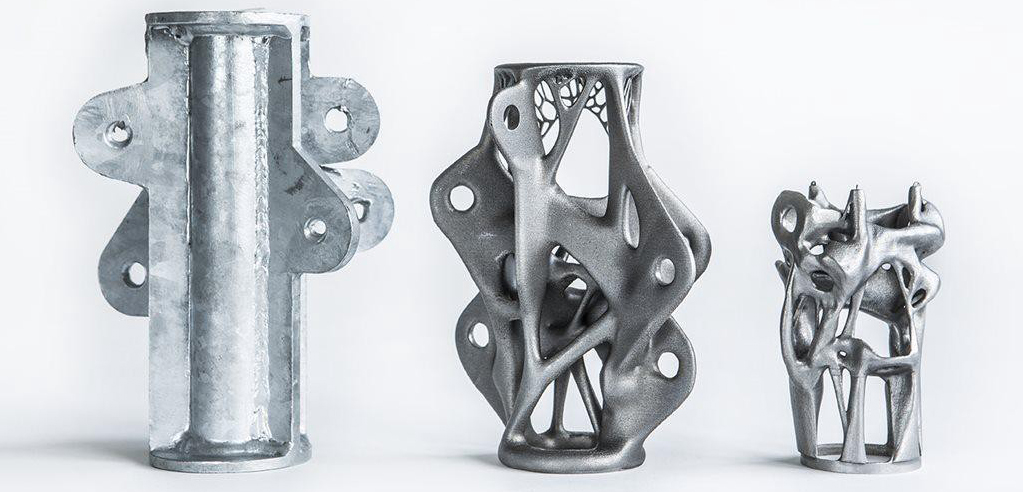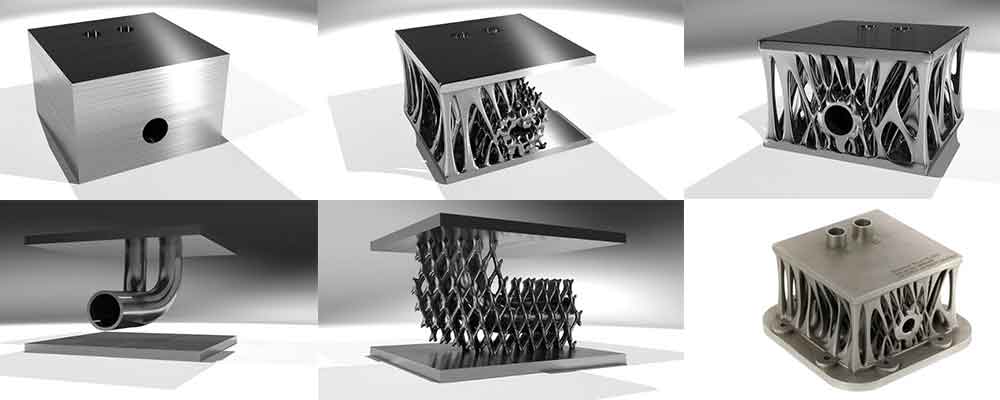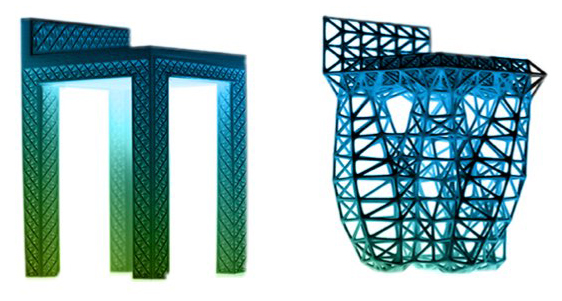With increasing reliance on 3D printing as a manufacturing method, designs for production are changing to better utilize this technology. Enter generative design, an optimized method for designing 3D-printed production parts.
Traditional design for manufacturing uses simple shapes and rigid, firm lines to create products. Generative design revolutionizes this process for 3D printers, creating new and complex shapes that are optimized according to budget, required materials, manufacturing method, stability, tension, flexibility, strength, and other factors.
Topology Optimization ≠ Generative Design
Topology optimization is often mentioned when discussing generative design, but the terms are not interchangeable. Topology optimization is an aspect of generative design, and involves designing based on various stress points to reduce the amount of material used and thus increase the speed of production while reducing material costs and weight. Topology optimization uses an existing design, whereas generative design can involve inputting more general values and building the design from the ground up.
ProtoCAM Engineering Manager, Ed Graham, has his own way of remembering the difference between generative design and topology optimization:
“I always think of the human body when it comes to the generative design approach; through generations, the human body has evolved into what we are today, although every body type has its own constraints to fit the exact body type, i.e. short people, tall people etc. Topology optimization is based more around science, and involves engineering based on fixed constraints of a specific design,” Graham says.
Topology optimization asks, what aspects can I remove to optimize this design? Whereas as generative design asks, what can I create based on these specific constraints and requirements?
Analyzing for Optimization
Designing for optimization is difficult; when considering numerous factors, such as budget, materials, and manufacturing capabilities, a designer cannot always determine the best design for the end product without intense research and testing.
Generative design takes the difficulty out of this process. A computer takes over a portion of the designer’s burden by analyzing and testing various designs against these constricting factors. Designers input their particular goals and constraints and the computer utilizes this information to produce designs that fit this data. Does an object need to be able to handle a certain amount of strain, or need mounting points in specific areas? A designer can input this information to narrow his design choices and choose the design that does exactly what he needs it to do. Returning to the original design and inputting new or additional factors is easy and produces more refined results for the designer to choose from.
A Nod to Nature
Generative design also mimics nature’s evolutionary approach to design. Gone are the straight, firm lines of traditional design and manufacturing. By designing by optimization, we reduce the lines of an object to more natural, curving shapes that still maintain rigidity and load-bearing capabilities. This more natural approach is visually appealing while also producing structurally sound designs.
Utilizing 3D Capabilities
As refined as the generative design process is, this digitized optimization means nothing without the right technology. Producing generative designs would be nearly impossible with traditional subtractive manufacturing, but 3D printing creates these designs with ease and accuracy. With the abilities of 3D printing ever increasing in terms of speed, materials, and print styles, 3D additive manufacturing will continue to broaden the design capabilities of generative design programs, resulting in better and better products.
A Boon to All
The benefits of using generative design are numerous; for one, new and interesting shapes and figures that would otherwise not be producible are created, adding a cosmetic benefit to using this technology. Time is saved, as a computer can produce thousands of optimized results in the time a designer is only able to create a few, non-optimized options. Generative design programs also offer predicted performance data, thus reducing testing time. Optimization allows for less material waste by removing unnecessary material, meaning objects created through generative design are lighter, cheaper, and speedier to produce. Finally, producers can be sure that their products have strength or flexibility or tension where they need it because the product has undergone an in-depth and algorithm-based process to produce a specific final result.
This type of design is hugely beneficial to makers in every industry. Used in aerospace technology, for example, generative design can reduce material weight and significantly reduce fuel costs. In the medical world, implants can be designed with specific spatial arrangement of porous and rough surface latticing to allow for better patient adaption and integration while increasing longevity.
Regardless of use, generative design is the future of 3D printing and additive manufacturing. With its ability to optimize designs for production under the unique manufacturing method of 3D printing, the sky’s the limit in terms of future production of ideal parts.



